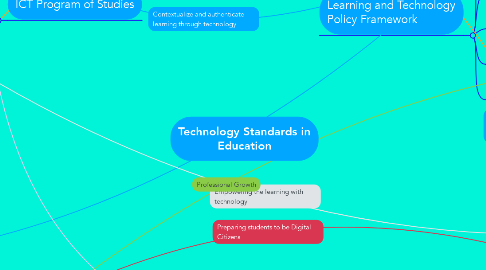Technology Standards in Education
by Jason Hugman

1. ISTE Standards for Teachers 2008
1.1. Use knowledge of both subject matter and technology in order to create unique and creative learning experiences for students
1.2. Design and create digital age learning experiences and assessments to help students learn and develop skills
1.3. Model digital age work and learning by exhibiting professional knowledge, skills and work processes for a digital world
1.4. Promote and model digital citizenship and responsibility in an evolving digital culture
1.5. Engage in professional growth and leadership and lifelong learning
2. ICT Program of Studies
2.1. Contextualize technology with application. Relate activities and projects to real-life situations to improve learning technology
2.2. Innovate communication, inquisitions, and problem solving with technology. Use digital tools to improve techniques for gathering, classifying and organizing information.
2.3. Students should understand the nature and effect of technology, the moral and ethical use of technology,
2.4. Students should learn the ability to use a variety of processes to critically assess information, manage inquiry, solve problems, do research and communicate with a variety of audiences
2.5. Students should gain the knowledge and skills required to use a variety of basic productivity tools and techniques like text composition; data organization; graphical, audio and multimedia composition and collaboration through digital means
3. ISTE Standards for Students 2016
3.1. Empowering the learner with technology to achieve their learning goals
3.2. Creating Digital Citizens that understand the rights and responsibilities that come with a digital world
3.3. Global Collaborators that use technology tools to enrich their learning through communication with other, both locally and globally
3.4. Creative Communicators, being able to communicate clearly and creatively across multiple digital platforms and tools
3.5. Able to use digital tools to construct knowledge accurately and meaningfully
4. Learning and Technology Policy Framework
4.1. Schools should use technology to support student-centred, personalized, and authentic learning for students.
4.2. All school members should have access to appropriate technology and reliable infrastructure for a digital age
4.3. Education officials establish policy and governance structures that leverage technology in support of student centered learning and system efficiencies
4.4. Develop, maintain, and apply knowledge and skills that help education professionals utilize technology effectively, innovatively, and efficiently,
4.5. Read, review, participate, share, and apply research to help sustain and advance technology in education


